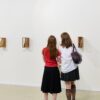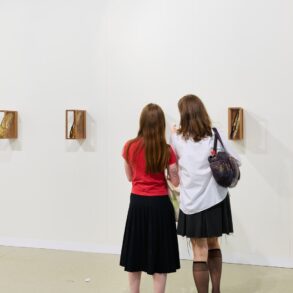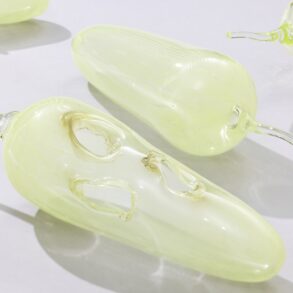Il Centre Pompidou dedicates a monograph to Suzanne Valadon (1865-1938), a bold and iconic artist, one of the most important of her generation. She was on the fringes of the dominant trends of her time: cubism and abstract art were in their infancy, while she he ardently defended the need to paint reality, placing the nude, both female and male, at the heart of her work and depicting bodies without artifice or voyeurism. Presented at the Centre Pompidou-Metz in 2023 (“Suzanne Valadon. A World of Her Own”), then at the Musée des Beaux-arts de Nantes (2024) and the Museu Nacional d’Art de Catalunya (2024), the homage to this seemingly modern artist, free from the conventions of her time, continues at the Centre Pompidou in 2025, enriched by new loans and new archives.
The freedom of a woman and an artist
The exhibition showcases this exceptional figure and highlights her pioneering, yet often underestimated, role in the birth of artistic modernity. It reveals the great freedom of this artist, who did not really adhere to any particular movement, except perhaps her own. The exhibition of almost 200 works draws on a wealth of national collections, notably the largest, that of the Centre Pompidou, but also the Musée d’Orsay and the Musée de l’Orangerie. Exceptional loans from the Metropolitan Museum of Modern Art in New York, the Fondation de l’Hermitage and major private collections complete the exhibition. It focuses on the artist’s two favorite media, drawing and painting, with particular emphasis on his graphic work, which is explored in depth through the presentation of a large number of drawings that have rarely been exhibited before.

The favorite model in all of Montmartre
The exhibition “Valadon” retraces this unique journey, from the artist’s early days as a favorite model in Montmartre to her first artistic recognition from her peers and critics. Suzanne Valadon truly bridged the centuries, embracing the Parisian fervor of the turn of the century, its cafés, its bal-musettes and its cabarets, and its many artistic, intellectual and social revolutions. This unprecedented insight into her work reveals both her friendships and artistic connections with bohemian painters, as well as her undeniable influence on the Parisian art scene thanks to the active support of her artist friends and gallery owners. This exhibition highlights the breadth, richness and complexity of her work, focusing on five thematic sections: Learning through Observation, Family Portraits, “I Paint People to Know Them,” “True Theory is Imposed by Nature,” and The Nude: A Female Vision. A selection of unpublished archives and works by her contemporaries with similar pictorial concerns, such as Juliette Roche, Georgette Agutte, Jacqueline Marval, Emilie Charmy and Hélène Delasalle, complete the exhibition.
Rebellious personality
The exceptional archive collection bequeathed to the Centre Pompidou in 1974 by Dr. Robert Le Masle, a physician, art collector and close friend of the artist, containing numerous photographs, manuscripts and documents now held in the Bibliothèque Kandinsky, provides essential testimony to Valadon’s rebellious personality and early artistic recognition. Following exhibitions of works by Alice Neel, Georgia O’Keefe, Dora Maar and Germaine Richier, this monograph is part of the Centre Pompidou’s ongoing efforts to deepen our understanding of the work of women artists and to increase the number of their works in the collection.
On the cover: Le Lancement du filet (1914)
This post was originally published on this site be sure to check out more of their content







